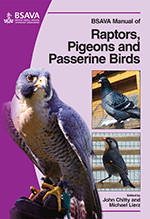
Full text loading...

The first routine use of endoscopy in birds occurred in the late 1970s for sexing monomorphic species. In the past few years it has become important for diagnostic purposes (including biopsy) and more recently for endoscopy-guided surgery. This chapter reviews technical requirements, preparation and contraindications, laparoscopy, tracheobronchoscopy, gastroscopy, endoscopy-guided biopsy, endoscopic findings, and surgical endoscopic procedures.
Endoscopy, biopsy and endosurgery, Page 1 of 1
< Previous page | Next page > /docserver/preview/fulltext/10.22233/9781910443101/9781910443101.13-1.gif

Full text loading...
































